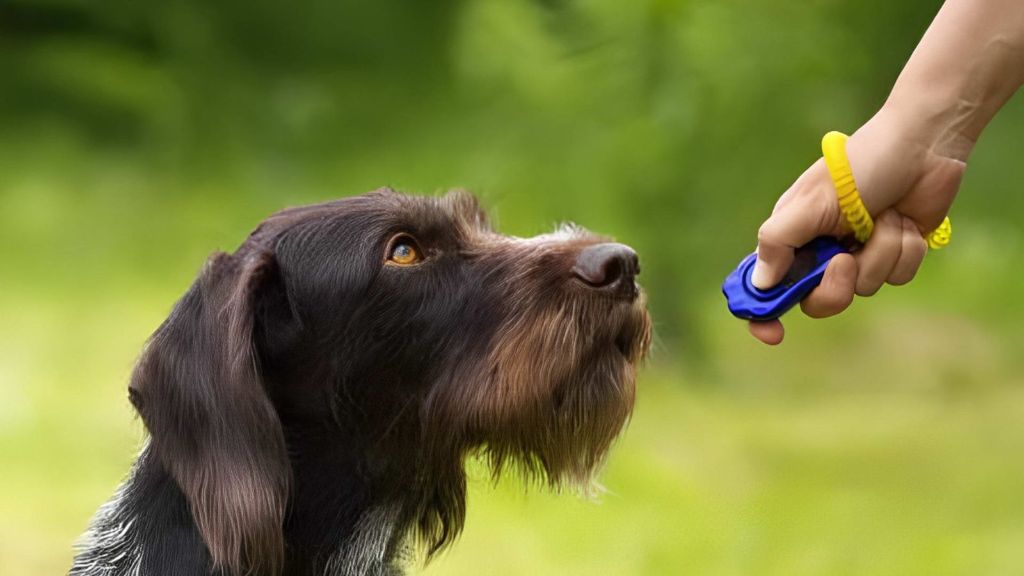Objective
My goal is to obtain a position as a dog trainer where I can utilize my passion for working with dogs to help them learn behaviors and commands through positive reinforcement techniques. I am dedicated to building strong relationships between dogs and their owners by teaching both patience and trust. With 5 years of experience training dogs of all breeds and ages, I am confident I have the skills and knowledge to excel as a dog trainer.
Education
While there are no formal education requirements to become a dog trainer, taking relevant courses and earning certifications can be very beneficial. Some recommended education paths include:
Completing a dog trainer certification program through organizations like the American Kennel Club, the Certification Council for Professional Dog Trainers, the International Association of Canine Professionals, or private dog training schools.
Earning a certificate or associate’s degree in animal behavior, dog obedience training, veterinary assistant, or a related field from a community college or technical school.
Getting a bachelor’s degree in animal science, biology, psychology, or a similar major. Coursework in animal behavior and training is a plus.
Taking continuing education courses and seminars on dog training methods, canine behavior, business skills, and other relevant topics to stay up-to-date on best practices.
Completing dog trainer apprenticeships to gain hands-on experience under the guidance of an experienced mentor.
Experience
Detail any prior dog handling experience such as volunteering at shelters, working at kennels/daycares, assisting trainers.
Volunteering at an animal shelter is a great way to gain experience working with dogs. Shelters often need volunteers to walk dogs, play with them, and help socialize them to make them more adoptable. Volunteering allows you to interact with all types of dogs and learn their body language and behavior (Source).

Working at a doggie daycare or boarding kennel provides insight into pack dynamics and how dogs interact. Responsibilities may include monitoring play groups, facilitating introductions between dogs, and identifying any problem behaviors that need addressing. This hands-on experience establishes foundational skills in dog handling (Source).
Assisting professional dog trainers is an excellent way to learn training techniques, build observational skills, and understand the business side of training. Look for apprenticeship opportunities to shadow experienced trainers. You’ll gain practical experience in obedience, behavior modification, and more while determining your training philosophy (Source).
Skills
Here are some key skills that dog trainers need:
- Patience – Dog training requires immense patience as it takes time and repetition for dogs to learn new behaviors and commands. A good trainer needs to be able to stay calm and keep trying different techniques if something isn’t working right away. As the old saying goes, “Patience is a virtue” when it comes to dog training.[1]
- Consistency – Being consistent with commands, rewards, and corrections is crucial for dogs to understand what is expected of them. Trainers need to use the same words, hand signals, tone of voice, and reinforcement tactics every time. Consistency from the trainer will lead to better consistency from the dog.[1]
- Communication – Dog trainers must be excellent communicators, both with dogs and people. They need to clearly convey instructions, praise, and corrections to dogs. With clients, trainers should listen closely, explain training concepts in an easy-to-understand way, and offer advice tailored to each dog’s unique needs.[2]
- Reading body language – The ability to read a dog’s body language and signals is crucial for understanding when a dog is stressed, confused, or learning during training. Trainers should recognize subtle cues like ear position, tail wagging, lip licking, and eye contact.[3]

Knowledge
A professional dog trainer must have extensive knowledge of dog behavior and psychology. This allows them to properly assess each dog’s unique personality, identify potential issues or challenges, and create customized training plans. Common topics to have expertise in include operant conditioning, classical conditioning, and canine cognitive learning theory (The Top Ten Most Important Dog Training Knowledge Concepts for Pet Owners to Understand).
In addition, understanding dog breeds and genetics provides insight into breed-specific traits and predispositions. Health and first aid knowledge ensures the trainer can properly care for dogs and handle any injuries or illnesses. Safety protocols such as supervision, proper equipment, and risk management are critical as well (13 Skills You Need to Become a Dog Trainer).
The best dog trainers continuously expand their knowledge through independent study, conferences, peer discussions, and hands-on experience. A lifetime learner mindset allows them to stay up-to-date on the latest behavioral research and training techniques.
Training Methods
Effective dog trainers utilize positive reinforcement techniques as the foundation of their training programs. Positive reinforcement entails rewarding desired behaviors and ignoring unwanted behaviors, rather than using punishment. The most commonly used positive reinforcement methods include clicker training and operant conditioning.
Clicker training associates a distinct “click” sound with receiving a reward. The click marks the precise moment the dog performs the desired behavior, allowing the trainer to reward actions accurately. Clicker training employs shaping to gradually mold behaviors through incremental steps (The Animal Care, 2022).

Operant conditioning, also called instrumental conditioning, uses consequences to modify voluntary behaviors. For example, giving a dog treat immediately after sitting teaches the dog that sitting earns rewards. Operant conditioning involves monitoring cues, prompting behaviors, rewarding good responses, and reducing rewards for inadequate responses (Small Door Veterinary, 2022).
Skilled dog trainers rely heavily on positive reinforcement and avoid punishment-based methods. They focus on managing rewards to shape desired behaviors and build a strong relationship between owner and dog.
Communication
As a dog trainer, strong communication skills are essential for teaching clients how to properly work with their dogs. You must be able to clearly explain training techniques, provide straightforward instructions, and offer encouragement. According to the International Dog Trainers School, “Honesty, clear communication and diplomacy are all necessary traits you will need to be able to work with a client who might be unintentionally doing things that will undermine the dog’s training.”
I excel at communicating training goals and techniques in an easy-to-understand manner. My ability to listen to clients’ concerns enables me to customize my approach for each dog and owner. As The Modern Dog Trainer states, “If your goal is to help a lot of dogs, then you have to help their people.” I build rapport through compassionate guidance. My coaching emphasizes the human-animal bond.
With a patient, supportive style, I empower owners to implement training plans. My clear instructions and encouragement lead to success.
Adaptability
Outstanding dog trainers must be adaptable in their methods and techniques. Every dog is unique and learns in their own way. Eric Torres in his LinkedIn post “Adaptability: a lesson in dog training” notes that trainers must adjust their approaches based on each dog’s personality and needs [1]. Being flexible and creative with training methods is essential. The Academy of Pet Careers states that an exceptional trainer tailors their techniques to the individual dog [2]. Dogs have varying levels of food motivation, energy, focus, and more. Adaptable trainers observe each dog closely and modify their methods until they find what works. This flexibility allows them to bring out the best in every dog.
Passion
As a dog trainer, a genuine passion for working with dogs is crucial. You must have a deep love of dogs and a commitment to improving their lives through positive reinforcement training techniques. Your dedication to understanding canine behavior and psychology should be evident. Discuss how you became interested in dog training, your motivation for pursuing this career path, and any anecdotes that demonstrate your enthusiasm for the work. Emphasize your desire to establish trusting relationships with dogs and help them reach their potential through compassionate yet firm leadership.
For example, you might write: “From a young age I felt a profound connection with dogs. I began reading books about canine behavior and started helping friends train their new puppies using reward-based methods. Seeing troubled dogs transform through patient and loving guidance solidified my career path as a dog trainer. I am fulfilled when I can make a difference in a struggling dog’s life by building their confidence, communication skills, and bond with their owner. My passion for enhancing the human-animal bond through positive reinforcement training shines through in every lesson I teach.”
References
When applying for a job as a dog trainer, it’s important to include professional and/or academic references who can speak to your abilities and experience. Choose 2-3 individuals who you have worked with previously and who can provide positive recommendations for your skills as a dog trainer.
Good references may include previous employers, supervisors, colleagues, professors, or mentors who have observed your work with dogs firsthand. When listing references on your resume, be sure to include their full name, job title, company, phone number, email address, and relationship to you. With permission, choose people who can discuss your dog training competencies, training techniques, reliability, and professionalism.
For example:
Jill Smith
Head Trainer, Happy Tails Dog Training
123-456-7890
[email protected]
Former supervisor
Including strong professional references can make a positive impression on hiring managers and help verify your skills described throughout the resume. Be sure references are available to be contacted and willing to provide a glowing recommendation.
According to resume.io, “This in-depth guide teaches you when to include references on a resume, and when NOT to use them.” (https://resume.io/how-to-write-a-resume/references-on-a-resume)

